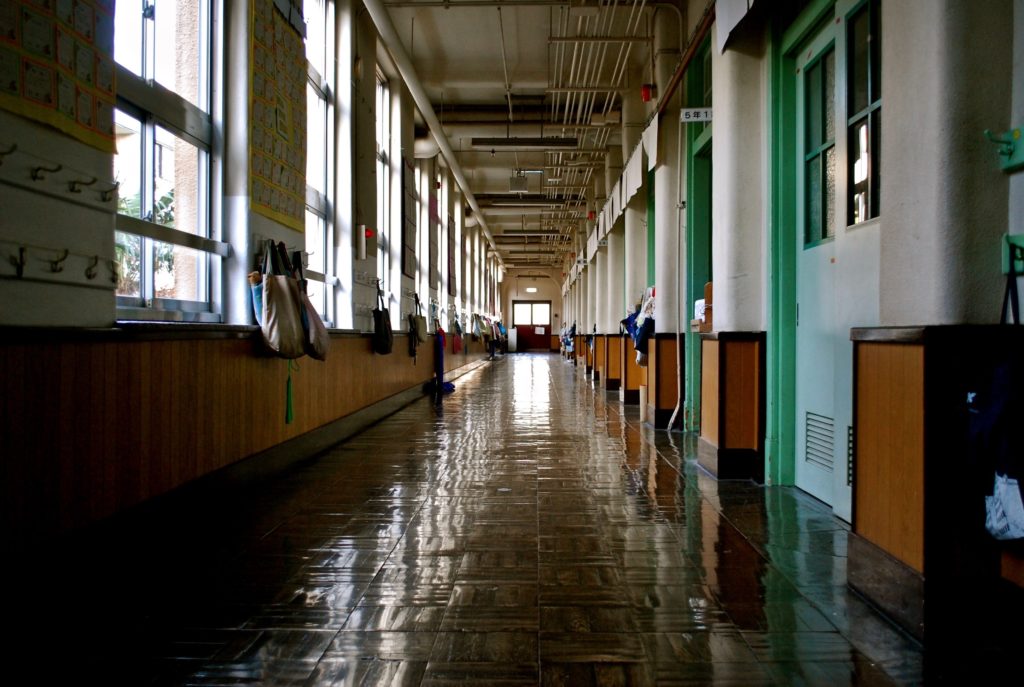
Published MArch 28, 2022
Normal people believe that sexualizing children is predatory. But, in light of the recent passage of a Florida bill that would restrict instruction about sexual orientation and gender identity in elementary schools, it is clear that many activist educators and their political allies are comfortable with the idea that elementary school children are already members of the “LGBTQI+ community” and should be instructed accordingly. OK, groomer.
Implicit in the LGBT movement’s popular “born this way” narrative—there was even a song—is the belief that children are intrinsically sexual. The argument that each of us is born with an immutable sexual orientation and gender identity provided an effective ersatz natural-law case for everything from same-sex marriage to gender transition. But it also ensured that the LGBT movement was coming for your children.
The idea that that every baby is born with a sexual orientation and gender identity means that some children are born into the sexual elect of the “LGBTQI+ community.” This suggests that all children ought to learn about sex and gender as soon as possible, so that they will be able to discover their authentic sexual selves. In this view, kids need to learn about gay sex and gender transition because some of them are gay, trans, or some other rainbow identity, even if they don’t know it yet—and the rest need to learn to be accepting.
Thus, child drag queens and transgender toddlers have been championed by the LGBT movement for years now. After all, if sexual orientation and gender identity are innate and immutable, there is no reason to fear adults grooming children into LGBT identities. The only reasonable fear is that old-fashioned bigots will pressure children into repressing those identities.
Ideology versus Parenting
Furthermore, if children are born LGBT, it follows that they should be raised by adults who will support them in these intrinsic, immutable identities. Thus, it was inevitable that the LGBT movement would begin taking children away from parents that are deemed unsupportive of LGBT identities. After all, a parent who refuses to embrace a child’s fundamental identity is obviously not looking after the best interests of the child. The assertion that children must be affirmed in LGBT identities lest they commit suicide provides further justification to take kids away from “unsupportive” parents.
And because it is not immediately clear whether a child will identify as LGBT, all parents who reject LGBT ideology are necessarily suspect. This was made explicit in the Biden administration’s “Guide for Foster Parents,” which endorses the “born this way” thesis, including the notion that a four-year-old may be transgender. The guide says that “Any steps you take to make your home welcoming and affirming to LGBTQ+ youth will benefit all children and youth in your care. . . . Behaviors that openly reject a youth’s LGBTQ+ identity must be avoided and not tolerated, . . . including religious activities . . . and family gatherings.” It is the Biden administration’s official view that you are unfit to be a foster parent (and by implication, to be a parent at all) if you do not accept LGBT ideology and affirm LGBT identities—including transgender preschoolers.
The “born this way” mantra was politically and culturally triumphant as a justification for adult relationships and identities. But the radical implications of the claim that children are members of the “LGBTQI+ community” from birth ensure continued conflict. Many people who accepted same-sex marriage and Bruce becoming Caitlyn are balking at preteen drag queens and trans toddlers.
Not Born This Way
This revulsion should induce a reevaluation of the “born this way” creed. By itself, it is a poor argument, for it may be wrong to act on an innate desire. The slogan is really shorthand for a collection of philosophical assumptions along the following lines: human flourishing depends on being authentically oneself; this requires freedom for self-identifying and acting on one’s sexual orientation and gender identity, which are innate, essential elements of a person that are harmful to repress or attempt to alter.
To the extent that this argument relies on a “born this way” component, it fails, for sexual orientation and gender identity are not innate and immutable at birth. This is not to say that they are conscious choices, or that they are entirely malleable. Some people feel strong same-sex attractions that they did not choose, and that may be permanent; some people are genuinely distressed by a feeling of incongruence with regard to their biological sex.
Nonetheless, the dogmatic claims of the “born this way” credo are at odds with reality. Scientifically, the search for a “gay gene” ended in failure a few years ago. The best scientific evidence suggests multicausal explanations for how we experience sexual desire and gender, with environmental and social factors playing crucial roles in their development. As one LGBT-sympathetic writer put it, “it’s likely that our sexualities and genders are textured by a mix of social experience, the firings off of neurons, hormonal swirls and the transcription of DNA.” We are, in short, not born this way.
Though it lacks the zip of a good slogan, the truth is closer to “born with some possible inclinations this way that can be activated or increased by a mixture of environmental and social factors, as well as individual choice.” Because of the complexity of the factors involved, the sources and strengths of various rainbow identities will vary from person to person. And this is demonstrated both in individual anecdotes and by the sudden surge of gender dysphoria among teenage girls across the Western world. That many youth transgender identities are products of social contagion is increasingly obvious, and now the medical risks of youth transition even have leading trans doctors calling for reconsidering the rush to transition children. The many people who detransition also testify against the rush to transition children.
Teachers as Recruiters
The collapse of the “born this way” narrative of sexual orientation and gender identity matters, because the narrative has been used by some LGBT activists and their allies to justify claiming children as part of the “LGBTQI+ community.” They are pressuring our culture, curricula, and even churches to affirm the ostensibly intrinsic rainbow identities of children. But children’s identities are not so predestined, and the development of sexuality and gender identity is complex and at least partly socially conditioned. Though children are not blank slates, neither are they born with their sexualities predetermined, and what is taught to and modeled for them at school will be part of their sexual development. Thus, instead of helping children discern intrinsic sexual orientations and gender identities, the educational and cultural efforts of LGBT activists and allies are shaping children’s sexuality and sense of gender.
Children are suggestible and malleable, including their sexual orientation and gender identity. And yet many LGBT activists and their allies want every kindergarten to teach that boys can become girls and girls can become boys. They want every middle school to have an LGBT club with teachers actively recruiting for it. They are determined to celebrate and praise kids who come out as part of the rainbow elect while labeling those who do not as cis-hetero oppressors. They are, in short, acting like recruiters, with activist teachers even working to hide students’ LGBT identities from parents.
These aggressive tactics, under which classrooms, culture, and social media promote rainbow identities, have coincided with a sharp increase in the number of young people who identity as LGBT, far in excess of what can be explained by more people coming out as stigma declines. According to Gallup, one in five adults from Gen Z identifies as LGBT. This dramatic rise in LGBT identification demonstrates that these identities are being created, not discerned.
This is why efforts such as the Florida bill matter. These debates are not just about who will teach children about sex and sexual morality, but also about who has the right to direct their development. Activist educators are determined to do so, regardless of what parents may wish. But the idea of children as intrinsically LGBT is based on a lie, and it is therefore right to restrict educators from proselytizing on behalf of LGBT identities. Steps such as curriculum transparency are also essential to hold educators accountable. Additionally—and this is a point where the Florida bill fails—it is also necessary that educators who encourage and assist children in hiding a purported LGBT identity from their parents be treated as predatory groomers.
LGBT activists used to insist that they were not interested in recruiting children, and many adults who identify as LGBT still feel that way. But those driving the LGBT movement are now not even trying to hide their grooming. They really are coming for children.
Nathanael Blake is a postdoctoral fellow at the Ethics and Public Policy Center.
Photo by kyo azuma on Unsplash
Nathanael Blake, Ph.D. is a Postdoctoral Fellow at the Ethics and Public Policy Center. His primary research interests are American political theory, Christian political thought, and the intersection of natural law and philosophical hermeneutics. His published scholarship has included work on Jean-Jacques Rousseau, Hans-Georg Gadamer, Alasdair MacIntyre, Russell Kirk and J.R.R. Tolkien. He is currently working on a study of Kierkegaard and labor. As a cultural observer and commentator, he is also fascinated at how our secularizing culture develops substitutes for the loss of religious symbols, meaning and order.








